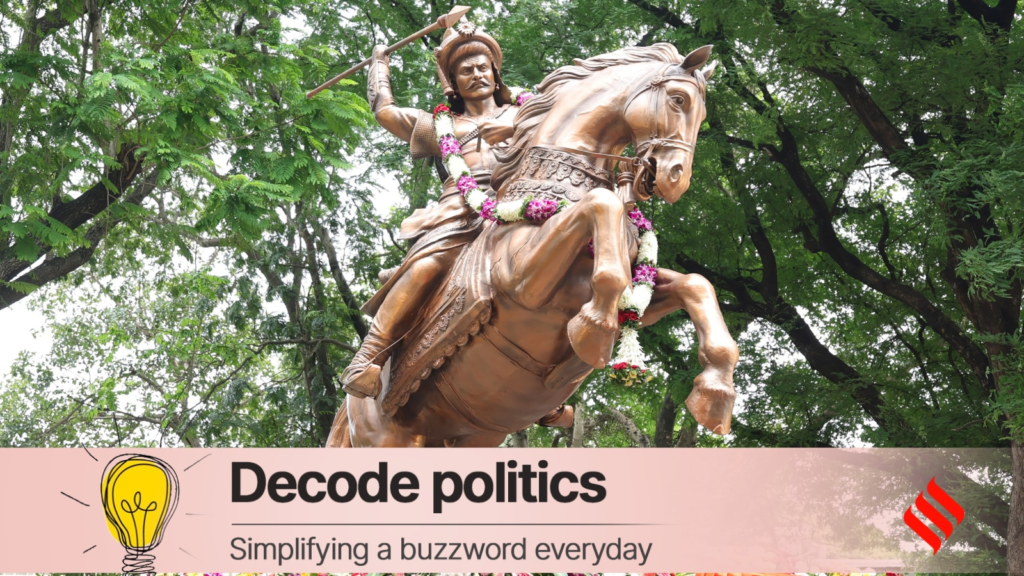970x125
As Union Home Minister Amit Shah unveiled a statue of Peshwa Bajirao I at the National Defence Academy (NDA) in Khadakwasla on July 4, conspicuous by his absence was Nawab Shadab Ali Bahadur, who claims to be a descendant of the Peshwa through Mastani and Shamsher Bahadur.
970x125
Shadab Ali Bahadur said he was “boycotting” the event as he got the invitation at the last minute and was told that he would not be allowed to share the stage with Shah.
Bahadur’s remarks and subsequent social media posts on the issue have again triggered a debate on the Peshwas’ legacy, and the effect that it has had on the politics of Maharashtra and India.
What is the lineage of Shadab Ali Bahadur?
Shadab Ali comes from the family of Mastani and Peshwa Bajirao I.
According to the head of the Maratha Research Centre at Savitribai Phule Pune University (SPPU), Pandurang Balkawade, Mastani was the daughter of Maharaja Chhatrasal of Bundelkhand and his Muslim wife Ruhani Begum. Shamsher Bahadur was Mastani and Bajirao’s child.
“Both Ruhani and Mastani were Kabirpanthis. When Shamsher Bahadur was born to Mastani, he was not accepted as a Hindu… Hence, Shamsher Bahadur was not taken into the orthodox Brahmin fold,” Balkawade said.
However, Balkawade’s research shows, even as Shamsher Bahadur was raised a Muslim, his relations with Bajirao’s side of the family were amicable. “In his letters to his uncle and Bajirao’s younger brother, Chimaji Appa, Shamsher Bahadur referred to him as ‘Tirthrup’, a title reserved for fathers and father-like figures. In return, Appa referred to his nephew as ‘chiranjeev’, usually used by fathers to address their sons,” Balkawade said.
Though not “allowed” to be a Hindu, Shamsher Bahadur was very much a representative of the Peshwas in North India, and played a valiant role in the third battle of Panipat in 1761, in which he was killed.
Later, Shamsher Bahadur’s great grandson Ali Bahadur played a key role during the 1857 Mutiny, considered the first war of Independence. Ali Bahadur sided with Tatya Tope (the commander of the Peshwa army) and Rani Laxmibai of Jhansi in their battle against the British.
Who were the Peshwas?
After the death of Chhatrapati Shivaji and the killing of his son Sambhaji, the Maratha empire stared at the risk of being obliterated. A group of Maratha warriors managed to save Shivaji’s second son, Chhatrapati Rajaram, to keep the Maratha empire from crumbling.
Peshwas were Brahmins and part of the “Ashta Pradhans” or eight-member councils established by Shivaji to assist in the administration of his Maratha kingdom. Bajirao inherited the Peshwa title from his father Balaji Vishwanath, who was appointed Peshwa by Shahu I.
While the Marathas and Peshwas had a close association initially, relations between the Brahmins and Marathas deteriorated over time, and often flared up in public. The latest row comes at a time when the Marathas, the most dominant community in Maharashtra, have carried out successful protests to secure a quota from the government.
Where are Peshwas placed in today’s political discourse?
Shivaji has gradually been co-opted by right-wing groups as a Hindutva icon, particularly due to his frequent clashes with the Mughal Empire led by Aurangzeb. They project him as the fighter for Hindus against Muslims.
In 2020, when Chhatrapati Udayanraje Bhosale, a descendant of Shivaji, jumped ship to the BJP and became a Rajya Sabha MP, NCP(SP) chief Sharad Pawar, a Maratha himself, took a jibe that “the Peshwas (Chief Minister Devendra Fadnavis of the BJP is a Brahmin) were now nominating Chhatrapatis”.
Last year, Udayanraje won the Lok Sabha polls from the Satara Lok Sabha seat on a BJP ticket.
The Brahmin versus Maratha tussle for dominance also came up a few weeks ago when BJP Rajya Sabha MP Medha Kulkarni demanded that the Pune Railway Station be named after Bajirao. Maratha organisations immediately protested, citing Brahminical hegemony; in turn provoking Brahmin organisations to lodge complaints against Maratha bodies over “hate speech”.
What lies at the bottom of the statue row?
Balkawade feels the row over the statue inaugurated by Shah at NDA is being staged, and that there is no deliberate omission of Shadab Ali Bahadur allegedly on grounds of being Muslim.
“When I held a special function at Raverkhedi (in Madhya Pradesh), where the samadhi of Bajirao is located, Ayaz Bahadur and Mahendra Peshwa – descendants of Shamsher Bahadur and Bajirao I respectively – sat together in the puja,” Balkawade said, adding that the VHP was also a part of the ceremony.
He believes the invite may not have gone out to Shadab Bahadur for another reason. “Many so-called descendants are unable to prove their links to dynasties as they do not have any documents,” Balkawade said.
970x125

